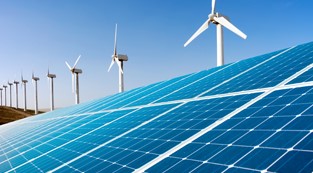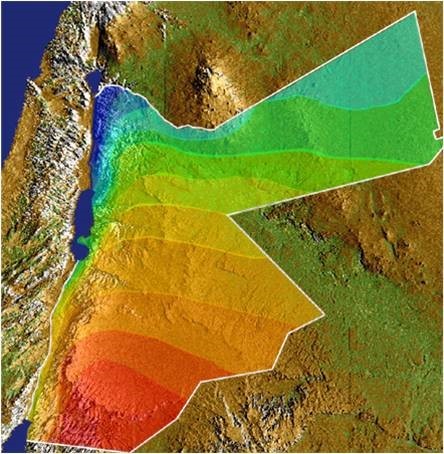
About Photovoltaic Division:
 Established in 1985.
Established in 1985.
 Experience in on-grid and off-grid PV systems.
Experience in on-grid and off-grid PV systems.
 Pioneer in the Jordanian PV consultancy field.
Pioneer in the Jordanian PV consultancy field.
 Proven track record in the country in addition to a strong track record on international level.
Proven track record in the country in addition to a strong track record on international level.
 Strong dedicated growing local team covering the PV team’s technical and financial activities.
Strong dedicated growing local team covering the PV team’s technical and financial activities.
In this field, NERC provides the following:
- Technical services and consultations.
- Laboratory testing of photovoltaic solar cells and system components.
- Design and installation of photovoltaic solar systems for different applications like water pumping, water desalination, rural electrification and grid-connected systems.
- Maintenance of photovoltaic solar systems.
- Solar radiation Measurement.
- Technical and technological cooperation with local and international institutions.
- Conduct training courses, seminars and workshops to enhance and develop local skills in the field of PV applications.
The training courses are as follows:
 Photovoltaic Basics & Technologies
Photovoltaic Basics & Technologies
 Solar Radiation Basics
Solar Radiation Basics
 PV System Components
PV System Components
 Off-Grid and On-Grid Systems
Off-Grid and On-Grid Systems
 Design and Sizing of PV Systems
Design and Sizing of PV Systems
 Introduction to Economics of PV Systems
Introduction to Economics of PV Systems
 Presentation of NERC’s PV
Presentation of NERC’s PV
Solar Cells
The solar cells that is made from semiconductors such as silicon is used to convert sunlight directly into electricity to feed the electrical loads such as lights, refrigerators, pumps, and others. Solar cells offer many advantages that it does not consume fuel, does not cause air pollution, has a long life and requires only a little maintenance.
The solar cells that is made from semiconductors such as silicon is used to convert sunlight directly into electricity to feed the electrical loads such as lights, refrigerators, pumps, and others. Solar cells offer many advantages that it does not consume fuel, does not cause air pollution, has a long life and requires only a little maintenance.
Clear days and sunshine hours average numbers..
|
Month
|
Average No. of clear days
|
Average No. of hours of sunshine
|
|
January
|
20
|
232
|
|
February
|
22
|
260
|
|
March
|
24
|
296
|
|
April
|
25
|
275
|
|
May
|
25
|
348
|
|
Jun
|
30
|
405
|
|
July
|
31
|
380
|
|
August
|
31
|
390
|
|
September
|
29
|
334
|
|
October
|
25
|
280
|
|
November
|
26
|
264
|
|
December
|
22
|
233
|
Solar Energy
Jordan is blessed with an abundance of solar energy which is evident from the annual daily average solar irradiance (average isulation intensity on a horizontal surface) ranges between 4-7 kWh/m2, which is one of the highest in the world. This corresponds to a total annual of 1400-2300 kWh/m3. The average sunshine duration is more than 300 days per year.
According to the solar atlas of Jordan, the country is divided into five regions: - (see Figure below)

The southern region representing Ma’an and Aqaba area, which has the highest solar isolation in the country and has the lowest values of diffuse irradiance. The annual average daily global irradiance is between 6-7 kWh/m2.
 The eastern region representing the semi desert and the (badia) remote area with an annual daily between 5.5-6 kWh/m2.
The eastern region representing the semi desert and the (badia) remote area with an annual daily between 5.5-6 kWh/m2.
 The middle region with an average global irradiance at 4.5 – 5 kWh/m2, but with the highest annual daily average of diffused irradiance.
The middle region with an average global irradiance at 4.5 – 5 kWh/m2, but with the highest annual daily average of diffused irradiance.
 The northern region with the annual daily average global irradiance of about 5.5 kWh/m2.
The northern region with the annual daily average global irradiance of about 5.5 kWh/m2.
 The western region representing the Jordan Valley area, situated below sea level and with an average annual daily global irradiance below 4.5 kWh/m2.
The western region representing the Jordan Valley area, situated below sea level and with an average annual daily global irradiance below 4.5 kWh/m2.

Solar energy is widely used for water heating especially in the domestic sector (25% of households), and solar energy is used for electricity generation in several stand-alone applications using Photovoltaic systems. Several applications as water pumping, telecommunications, desalination and lighting for remote sites have been successfully introduced.